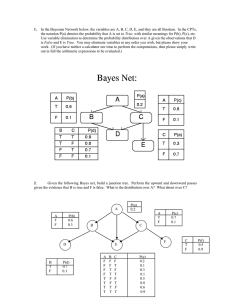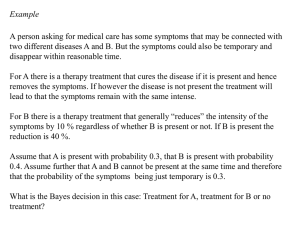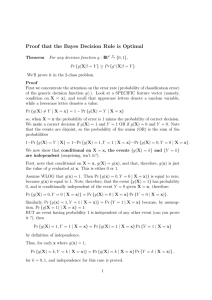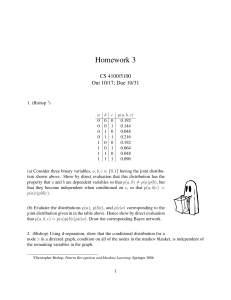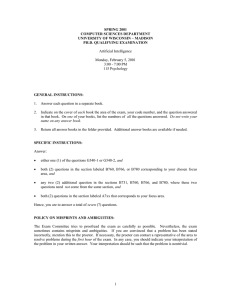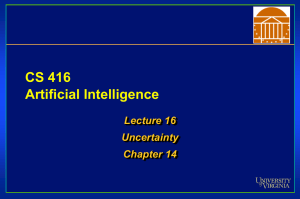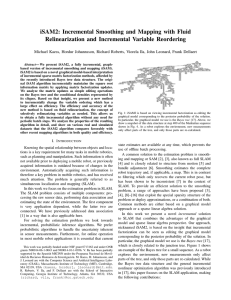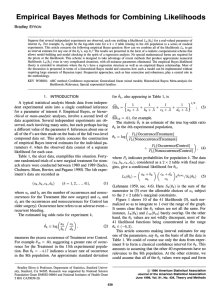Notes: Bayes’ Rule CS 3130/ECE 3530: Probability and Statistics for Engineers
advertisement
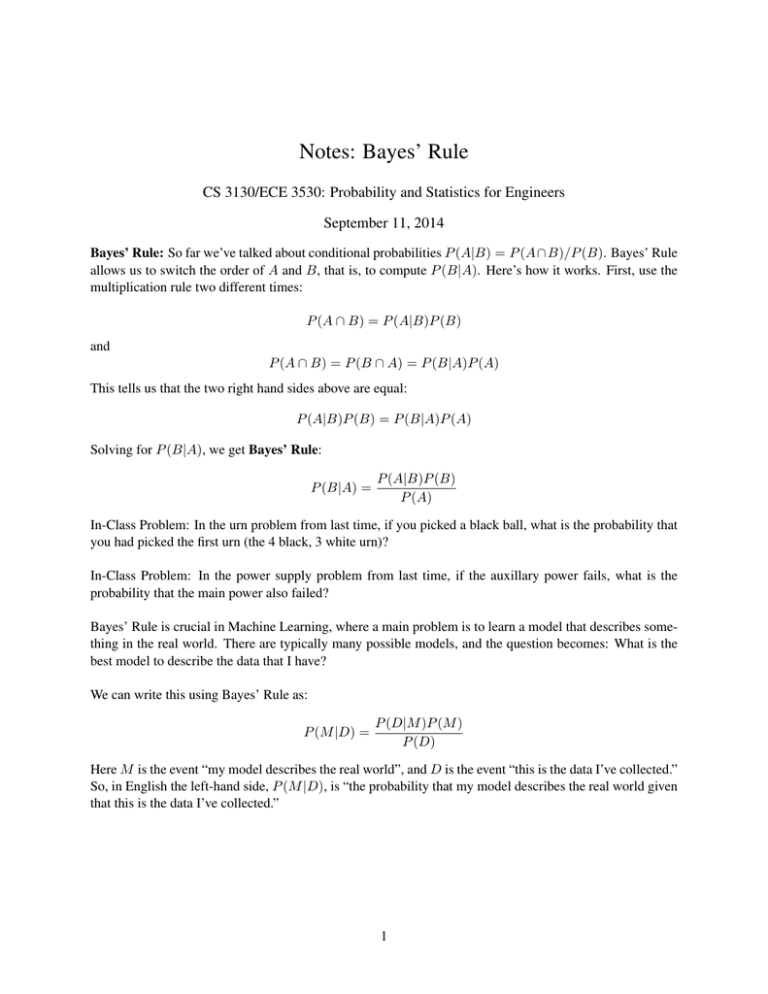
Notes: Bayes’ Rule CS 3130/ECE 3530: Probability and Statistics for Engineers September 11, 2014 Bayes’ Rule: So far we’ve talked about conditional probabilities P (A|B) = P (A ∩ B)/P (B). Bayes’ Rule allows us to switch the order of A and B, that is, to compute P (B|A). Here’s how it works. First, use the multiplication rule two different times: P (A ∩ B) = P (A|B)P (B) and P (A ∩ B) = P (B ∩ A) = P (B|A)P (A) This tells us that the two right hand sides above are equal: P (A|B)P (B) = P (B|A)P (A) Solving for P (B|A), we get Bayes’ Rule: P (B|A) = P (A|B)P (B) P (A) In-Class Problem: In the urn problem from last time, if you picked a black ball, what is the probability that you had picked the first urn (the 4 black, 3 white urn)? In-Class Problem: In the power supply problem from last time, if the auxillary power fails, what is the probability that the main power also failed? Bayes’ Rule is crucial in Machine Learning, where a main problem is to learn a model that describes something in the real world. There are typically many possible models, and the question becomes: What is the best model to describe the data that I have? We can write this using Bayes’ Rule as: P (M |D) = P (D|M )P (M ) P (D) Here M is the event “my model describes the real world”, and D is the event “this is the data I’ve collected.” So, in English the left-hand side, P (M |D), is “the probability that my model describes the real world given that this is the data I’ve collected.” 1
